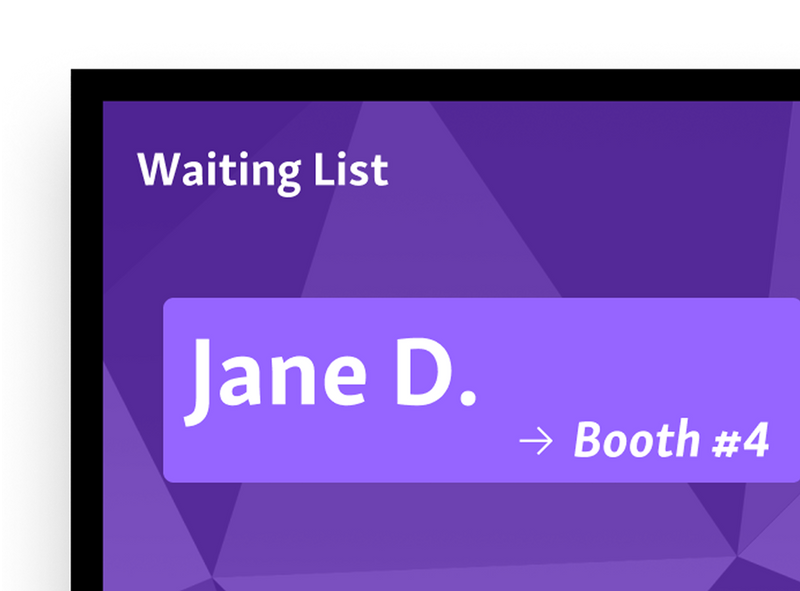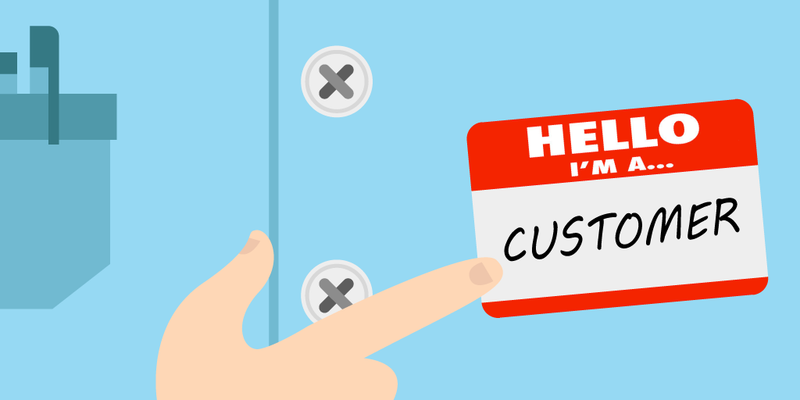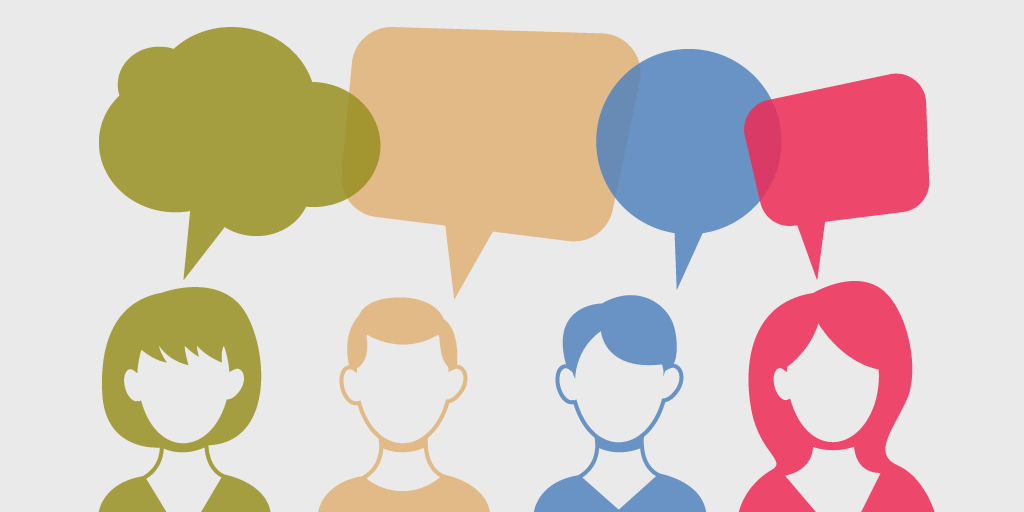In customer service, the smallest gestures often stick the longest. Tech matters, speed matters, but what people remember most is the human touch. And one of the simplest ways to make someone feel noticed? Say their name.
It’s personal. It’s direct. It can turn what feels like just another transaction into something that feels real.
From a quick hello at the front desk to a follow-up after an appointment, using someone’s name shows respect. It tells them they’re not just the next person in line, they’re an individual you’re paying attention to.
In this blog, we’ll look at why this works, what psychology says about it, and how to make it part of everyday service.
Why Is It Important to Use a Client's Name?
Names aren’t just labels. They trigger emotion. When you hear your own name, it sparks parts of the brain tied to identity and trust. It’s a small signal that says, you’re noticed, you count here.
In customer service, that one detail makes the experience feel personal. And today, people expect it. A recent stat shows 71% of consumers want personalized interactions. Skip it, and customers feel overlooked.
Using a client’s name can:
Build trust and make service feel genuine, not robotic.
Ease stress when waits run long or things don’t move fast.
Turn routine moments into something memorable, enough to bring people back.
It doesn’t take much, but it carries weight.
Benefits of Using Customer Names in Service
Using a customer’s name adds warmth, trust, and a personal touch that turns routine service into a memorable experience. Here's why it matters.
1. Builds Personal Connection
Nobody likes feeling like just another person in line. Say a customer’s name and the whole interaction changes. It goes from cold and routine to something human.
It’s not about ticking a box. It’s about showing you actually see the person in front of you.
That one step can:
Add a bit of familiarity and friendliness.
Make it feel like a real conversation, not just a process.
Open the door for trust, which matters most in sensitive situations.
At a clinic check-in or a city hall counter, a name makes people feel noticed. And when they feel noticed, they usually come back.
2. Improves Customer Experience
Good service isn’t only about speed. It’s also about how people feel while they’re being helped. And one of the easiest ways to make someone feel valued is by using their name in a natural way.
When staff do this, it signals real attention. It shows the exchange isn’t just going through the motions.
This small step:
Makes the service feel personal instead of generic.
Reminds the customer they’re more than a ticket number.
Lifts customer satisfaction, even when there’s waiting or a tricky request.
People want connection. Remembering and using names is a simple way to give it.
3. Strengthens Brand Loyalty
People don’t stay loyal just because of what you sell. They stick with how you make them feel. Saying someone’s name is a small thing, but it builds a personal connection that lasts past the moment.
When people feel noticed, they come back. And a lot of the time, they’ll bring someone else with them.
Using names helps by:
Adding a sense of belonging.
Making visits easier to remember.
Turning routine service into something more personal.
That’s how a first-time visitor turns into a regular. Sometimes all it takes is using their name.
4. Enhances Conflict Resolution
When service gets tough, long waits, sudden issues, frustrated visitors, communication becomes everything. Using a person’s name in that moment can ease the tension. It shifts the tone before things boil over.
It brings a bit of humanity into a situation that could otherwise feel cold.
Saying someone’s name can:
Show respect and calm frustration.
Make the exchange feel personal.
Move the mood from confrontation to cooperation.
Even if you can’t fix the problem right away, letting people know you see them helps keep trust intact.
5. Creates a Memorable Interaction
People forget generic service. What they remember is how you made them feel. Using someone’s name is one of the easiest ways to make that moment stick.
When staff do it naturally and often, it stands out. It shows the customer they weren’t just helped, they were remembered.
That small touch can:
Spark positive word-of-mouth.
Make a visit feel special instead of routine.
Encourage customers to come back more often.
Names help your service stay in people’s minds, for the right reasons.
You might also like - 9 Proven Benefits of Online Queue Management Systems
How to Know Your Customer’s Name?
Before you can use a customer service name, you need a way to get it. The key is doing it in a way that feels normal, not intrusive. The name of the customer should come up as part of the experience, not as a formality.
Simple ways to do it:
Digital check-ins or kiosks. Tools like Qminder let people type in their customer name at a self check-in kiosk. Staff see it right away and can use it naturally through the visit.
Ask at the start. A quick, “May I have your name, please?” works in person or on the phone. If needed, ask for spelling so the customer name is correct.
Check records. If the name of the customer is already in your system from an appointment or past visit, use it when greeting them. It feels personal right away.

Using the customer name isn’t intrusive, it’s a basic way to show attention.
Best Practices and Common Mistakes in Using Customer Names
Using names can improve your service, but only if done right. Here’s how to use customer names effectively, and what to avoid.
Best Practices
Follow these simple, respectful techniques to make customer name usage feel natural, personal, and impactful in every interaction.
1. Use the customer name in a natural way
A customer service name should never sound forced. Use the name of the customer where it fits, hello at the start, a quick mention in the middle, or when closing the conversation. If you keep repeating the customer name, it feels fake. Once or twice is enough.
2. Match tone and formality
Not every place calls for first names. In healthcare, government, or other formal spots, start with Mr., Ms., or Dr. and let the person guide you. If you’re unsure, ask how the customer name should be used. That quick check shows respect.
3. Confirm pronunciation
If you’re not sure how to say the name of the customer, ask. A simple “Can you tell me how to pronounce your name?” works. Most people like the effort. Getting a customer service name wrong over and over feels careless, but getting it right builds trust.
4. Display names on Waitlist TV (if appropriate)
Showing first names on a public waitlist screen helps visitors feel acknowledged while keeping things HIPAA, and privacy-friendly. It’s a more personal alternative to ticket numbers and makes the waiting experience feel less anonymous.

5. Personalize automatic messages with names
Automated doesn’t have to mean impersonal. Include the customer’s name in automated SMS or email messages, like “Hi Sam, you're next in line,” to maintain that human touch, even when communication is system-driven. It’s a simple way to scale warmth and attention.

Common Mistakes to Avoid
Even good intentions can backfire. Avoid these common slip-ups when using customer names to keep interactions respectful and professional.
1. Overusing the customer name
Say the customer service name too much and it stops feeling real. It sounds like a script, not a person. Once or twice is enough. Use the customer name where it fits and leave it there.
2. Mispronouncing or misspelling names
Getting the name of the customer wrong, even once, can throw the whole interaction off. Keep saying it wrong and it feels careless. If you don’t know, just ask. A quick “Can you tell me how to pronounce your name?” shows effort.
3. Using nicknames without permission
Don’t shorten a customer name unless they say it’s fine. Turning “Jonathan” into “Jon” on your own can come across as unprofessional. Stick with the name of the customer they give you, and follow their lead.
4. Being too casual in formal settings
In some places, clinics, government offices, banks, the first name of the customer may sound out of place. Start formal: Ms. Lee, Dr. Patel. If the customer wants it casual, they’ll say so.
Also read - Best Practices for Managing High-Demand DMV Services
Make Every Interaction Personal with Just One Word
Using a customer name isn’t just polite, it’s powerful. A simple customer service name can build trust, lower frustration, and turn forgettable exchanges into something people remember. When done right, this one habit makes the service feel more human and more effective.
From a front desk hello to a digital message or even a waitlist display, using the name of the customer makes them feel noticed. And that feeling is what keeps them coming back.
Qminder helps by weaving the customer name into every touchpoint, check-in, wait times, and follow-ups, without making it complicated. The tools scale with your team so the personal touch doesn’t get lost. Explore more proven personalization strategies to make service feel human at every step.
Try Qminder free for 14 days and see how adding a simple name of the customer changes the service experience.
Yes. Personalized service, including using customer names, can improve overall experience, which directly influences customer footfall. When visitors feel acknowledged, they’re more likely to return, increasing repeat footfall and brand loyalty over time.
Encourage active listening and note-taking during check-in or introductions. Queue management tools like Qminder can assist by displaying names on-screen, helping staff recall and use them accurately throughout the service flow.
Absolutely. Whether it’s healthcare, government, retail, or education, using names makes service more personal. It’s especially powerful in industries where customer footfall is high and the risk of feeling overlooked is greater.
No, it’s not rude to call someone by their first name if done respectfully. In customer service, it often feels more personal and helps build connection. Just be mindful of the setting and match the level of formality to the customer’s comfort.






